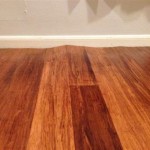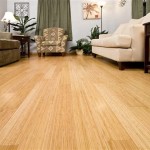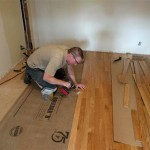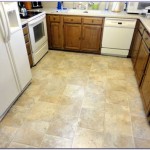Reclaimed Engineered Wooden Flooring: A Sustainable and Stylish Choice
Reclaimed engineered wooden flooring presents a compelling alternative to newly manufactured wood flooring options. It offers a unique blend of aesthetic appeal, environmental responsibility, and durability. This type of flooring leverages the inherent strength and beauty of reclaimed wood, combined with the stability and efficiency of engineered construction. Understanding the composition, benefits, installation considerations, and maintenance requirements of reclaimed engineered wooden flooring is crucial for making an informed decision.
Engineered wood flooring differs significantly from solid hardwood. Solid hardwood consists of a single piece of wood throughout its thickness. Engineered wood, on the other hand, comprises multiple layers bonded together. Typically, a top layer, often called a veneer, consists of real wood, offering the desired species, grade, and finish. This top layer is adhered to a core composed of multiple layers of plywood, high-density fiberboard (HDF), or other composite materials. This multi-layered construction provides increased dimensional stability compared to solid wood, making it less susceptible to warping, cupping, or shrinking due to changes in humidity and temperature.
Reclaimed engineered wooden flooring takes this concept a step further by using reclaimed wood for the top veneer. This reclaimed wood can originate from a variety of sources, including deconstructed barns, factories, warehouses, and even submerged logs. The process of reclaiming wood involves carefully salvaging, cleaning, and processing the material to prepare it for use in flooring production. This not only reduces the demand for newly harvested timber but also gives a second life to wood that would otherwise be discarded.
The Environmental Advantages of Reclaimed Wood
Choosing reclaimed engineered wooden flooring offers significant environmental benefits. The most prominent advantage is the reduction in deforestation. By utilizing reclaimed wood, the demand for newly harvested trees decreases. This helps preserve forests, which play a critical role in carbon sequestration, oxygen production, and biodiversity conservation. Forests act as vital carbon sinks, absorbing atmospheric carbon dioxide and mitigating the effects of climate change. Reducing deforestation helps maintain these crucial ecosystems.
Furthermore, the production of reclaimed engineered flooring generally requires less energy compared to manufacturing new wood flooring. The energy-intensive processes of logging, milling, and transporting new timber are largely avoided. Reclaiming wood requires energy for salvaging, cleaning, and processing, but these energy requirements are typically lower than those associated with producing new wood. This reduction in energy consumption contributes to a smaller carbon footprint and a more sustainable building practice.
Another environmental benefit is the reduction of waste. Deconstructing buildings and salvaging wood prevents it from ending up in landfills. Landfills contribute to greenhouse gas emissions and can contaminate soil and water resources. By repurposing reclaimed wood, it reduces the volume of waste sent to landfills and promotes a circular economy, where materials are reused and recycled instead of being discarded.
The Aesthetic and Structural Qualities of Reclaimed Wood
Reclaimed wood possesses a unique aesthetic character that is difficult to replicate with newly manufactured materials. Over time, wood develops a patina, which is a subtle change in color and texture due to exposure to sunlight, air, and moisture. This natural aging process gives reclaimed wood a distinctive warmth and depth that adds character to any space. Nail holes, saw marks, and other imperfections are often retained, adding to the rustic charm and historical narrative of the flooring.
In many cases, reclaimed wood originates from old-growth forests, which contained trees that grew for centuries. These trees often have tighter grain patterns and are denser than trees harvested from younger forests. This density translates to increased durability and resistance to wear and tear. While the engineering process adds stability, the quality of the reclaimed veneer contributes significantly to the overall lifespan and performance of the flooring.
The availability of different species and grades of reclaimed wood allows for a wide range of design possibilities. Reclaimed oak, maple, pine, and other wood species can be used to create floors with varying colors, textures, and grain patterns. This versatility enables homeowners and designers to achieve a specific aesthetic vision, whether it be a rustic farmhouse look or a more modern and sophisticated style.
Installation and Maintenance Considerations
The installation of reclaimed engineered wooden flooring is generally similar to the installation of traditional engineered wood flooring. The subfloor must be clean, level, and dry. Depending on the type of engineered flooring, it can be installed using glue-down, nail-down, or floating methods. Floating floors utilize interlocking planks that click together without being attached to the subfloor. Glue-down and nail-down methods require adhering or fastening the flooring directly to the subfloor. Professional installation is recommended to ensure proper fitting and to avoid potential issues such as gaps, unevenness, or squeaking.
Acclimation is a crucial step in the installation process. Engineered wood flooring needs to acclimate to the environment in which it will be installed. This involves allowing the flooring to sit in the room for several days prior to installation, allowing it to adjust to the temperature and humidity levels. Proper acclimation helps minimize expansion and contraction after installation, reducing the risk of warping or gapping.
Maintaining reclaimed engineered wooden flooring is relatively straightforward. Regular sweeping or vacuuming is essential to remove dust and debris. Damp mopping with a pH-neutral cleaner specifically designed for wood floors is recommended for occasional cleaning. Avoid using excessive water, as it can damage the wood over time. Applying a protective finish or sealant can help prevent scratches and stains. Area rugs can be used in high-traffic areas to protect the flooring from wear and tear. With proper care and maintenance, reclaimed engineered wooden flooring can last for many years, providing both beauty and durability.
One important consideration is the potential for variation in the reclaimed wood. Since the wood comes from different sources and has been exposed to varying conditions, there may be slight differences in color, grain pattern, or texture between individual planks. This variation is part of the inherent character of reclaimed wood and contributes to its unique appeal. However, it is important to be aware of this potential and to work with a reputable supplier who can ensure that the flooring is carefully selected and graded to minimize any extreme variations.
In summary, reclaimed engineered wooden flooring represents a responsible and aesthetically pleasing option for flooring. Its environmental benefits, unique aesthetic qualities, and durable construction make it an increasingly popular choice for both residential and commercial applications. Understanding the specific attributes of this type of flooring allows for a more informed decision and ultimately contributes to a more sustainable and beautiful living space.

Antique Wooden Floors Engineered Reclaimed Wide Planks

Heritage Oak Flooring Reclaimed Wood Solid Based

Antique Pine Boardwalk Hardwood Floors

Reclaimed Wood Flooring Woodworks By Ted Todd

Antique Wooden Floors Engineered Reclaimed Wide Planks

Reclaimed Wood Floors Vs Repro

Gorgeous Unfinished Engineered Wide Plank Wood Flooring Reclaimed Or Fsc

Engineered Wood Flooring Mixed Hardwoods Reclaimed Lumber S

Antique Wooden Floors Engineered Reclaimed Wide Planks

Antique Oak Hardwood Reclaimed Flooring Eco Building S
Related Posts








